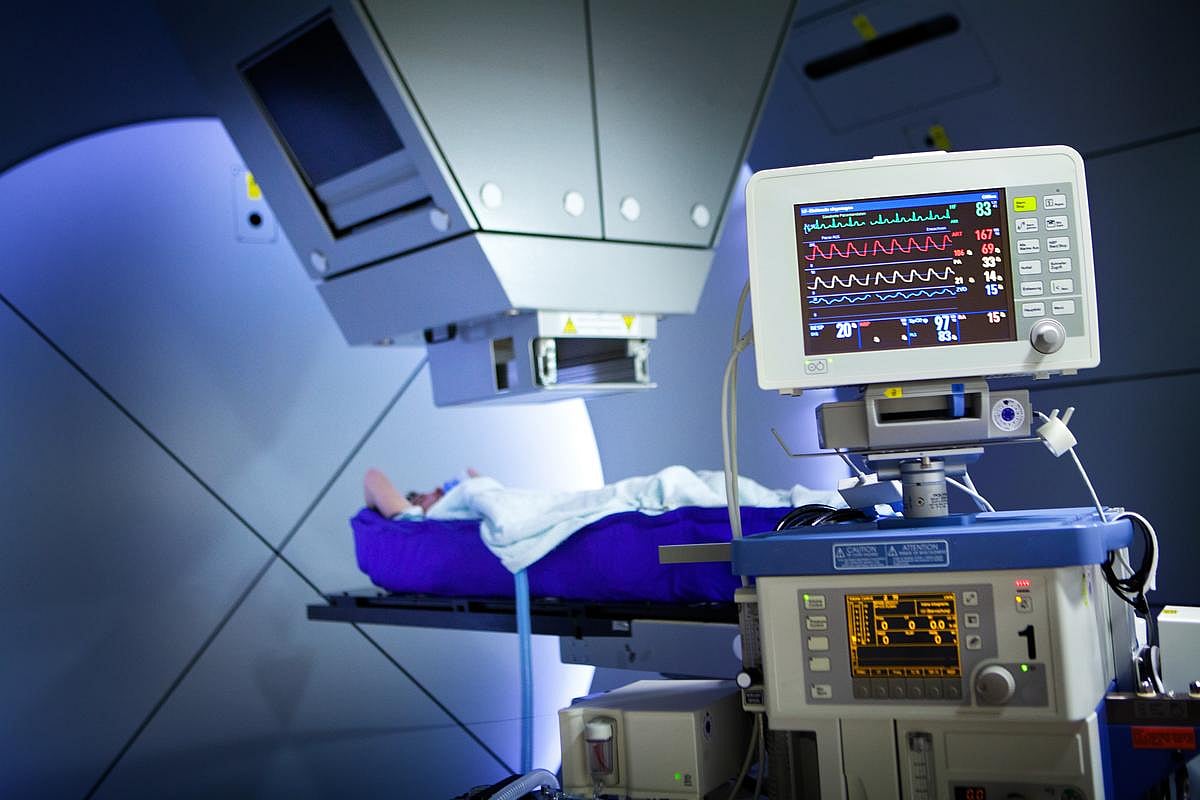By Beth Gilbert HealthDay Reporter
The annual meeting of the American Society for Radiation Oncology was held from Sept. 27 to Oct. 1 in San Francisco, drawing more than 11,000 participants from around the world, including physicians, oncology nurses, radiation therapists, biologists, physicists, and other cancer researchers. The conference featured educational courses focusing on radiation, surgical, and medical oncology.
In the NRG GU006 double-blind, placebo-controlled, randomized trial, Daniel E. Spratt, M.D., of the Case Western Reserve University School of Medicine in Cleveland, and colleagues validated a predictive biomarker — referred to as PAM50 — for hormone therapy benefit in patients with prostate cancer receiving secondary radiotherapy (SRT).
The authors evaluated the benefit of apalutamide based on a novel gene expression signature, PAM50, for men with recurrent prostate cancer receiving SRT. The researchers successfully demonstrated that patients with luminal B tumors derived benefit from apalutamide, while patients with nonluminal B tumors did not. Apalutamide was well tolerated, and only a few patients had grade 3 or higher side effects related to the modern radiotherapy used in the trial.
“Patients with recurrent prostate cancer planning to receive SRT should undergo PAM50 testing, and patients with luminal B tumors should be counseled on the benefits of adding hormone therapy to SRT,” Spratt said. “In contrast, nonluminal B patients should be counseled on the lack of demonstrated benefit of hormone therapy with SRT.”
One author disclosed financial ties to the pharmaceutical industry.
In the phase 2 LUNAR trial, Amar U. Kishan, M.D., of the University of California in Los Angeles, and colleagues found that adding two cycles of the investigational prostate-specific membrane antigen (PSMA)-targeting drug 177Lu-PNT2002 to targeted radiation in men with one to five lesions outside the prostate (after prior treatment of their prostate) improves progression-free survival (PFS).
The authors randomly assigned patients with hormone-sensitive, oligometastatic prostate cancer and one to five distant lesions visible on a PSMA positron emission tomography/computed tomography scan to either stereotactic body radiation therapy (SBRT) alone or two cycles of 177Lu-PNT2002 followed by SBRT.
This trial was a key proof-of-concept study demonstrating that 177Lu-PNT2002 was able to act on occult disease. Specifically, adding two cycles of 177Lu-PNT2002 to targeted radiation in men with one to five lesions outside the prostate (after prior treatment of their prostate) improved PFS by more than 10 months and allowed men to defer hormone therapy for up to two years on average with no significant added toxicity.
“Right now, the drug 177Lu-PNT2002 is not U.S. Food and Drug Administration-approved in this early setting of disease,” Kishan said. “I would recommend that men who have spread of their prostate cancer to one to five areas outside the prostate or prostate bed seek a consultation with a radiation oncologist to explore options.”
Funding for this study was provided by Lantheus.
In a randomized, sham-controlled trial, Byoung Hyuck Kim, M.D., Ph.D., of the Seoul National University College of Medicine and Boramae Medical Center in South Korea, and colleagues found that low-dose radiation at 3.0 Gy provides meaningful, short-term symptom relief for patients with mild-to-moderate knee osteoarthritis, without the risks of long-term medication use.
The authors randomly assigned patients with mild-to-moderate knee osteoarthritis to receive either a very low dose (0.3 Gy), a low dose (3.0 Gy), or a control sham treatment. At four months, the researchers found that a single 3.0 Gy course delivered over six sessions led to a significantly higher response rate than that seen in the sham group, and no treatment-related side effects were observed.
“These results suggest that low-dose radiation could become an additional, noninvasive option for carefully selected patients, especially when standard pain medications or injections are not suitable,” Kim said. “It is still early, and larger international efforts and long-term follow-up will be needed before routine use in clinics.”
ASTRO: Stereotactic Arrhythmia RT Safer Than Repeat Catheter Ablation for High-Risk Ventricular Tachycardia
MONDAY, Oct. 6, 2025 (HealthDay News) — For patients with ventricular tachycardia, stereotactic arrhythmia radiotherapy may be a comparable and safer alternative to repeat catheter ablation, according to a study presented at the annual meeting of the American Society for Radiation Oncology, held from Sept. 27 to Oct. 1 in San Francisco.
Read Full Text
ASTRO: SABR Offers Long-Term Benefits Comparable to Surgery for Non-Small Cell Lung Cancer
MONDAY, Oct. 6, 2025 (HealthDay News) — For patients with non-small cell lung cancer, stereotactic ablative radiotherapy offers long-term survival outcomes comparable to surgery, according to a study presented at the annual meeting of the American Society for Radiation Oncology, held from Sept. 27 to Oct. 1 in San Francisco.
Read Full Text
ASTRO: Low-Dose Radiation Improves Clinical Outcomes in Mild-to-Moderate Knee Osteoarthritis
FRIDAY, Oct. 3, 2025 (HealthDay News) — For patients with mild-to-moderate knee osteoarthritis, a single course of low-dose radiation therapy leads to a significant improvement in clinical outcomes, according to a study presented at the annual meeting of the American Society for Radiation Oncology, held from Sept. 27 to Oct. 1 in San Francisco.
Read Full Text
ASTRO: HRQOL Superior With SBRT for Intermediate-Risk Localized Prostate Cancer
FRIDAY, Oct. 3, 2025 (HealthDay News) — For patients with intermediate-risk localized prostate cancer, stereotactic body radiation therapy yields favorable bowel health-related quality of life compared with moderately hypofractionated intensity-modulated radiation therapy, according to a study presented at the annual meeting of the American Society for Radiation Oncology, held from Sept. 27 to Oct. 1 in San Francisco.
Read Full Text
Copyright © 2025 HealthDay. All rights reserved.








